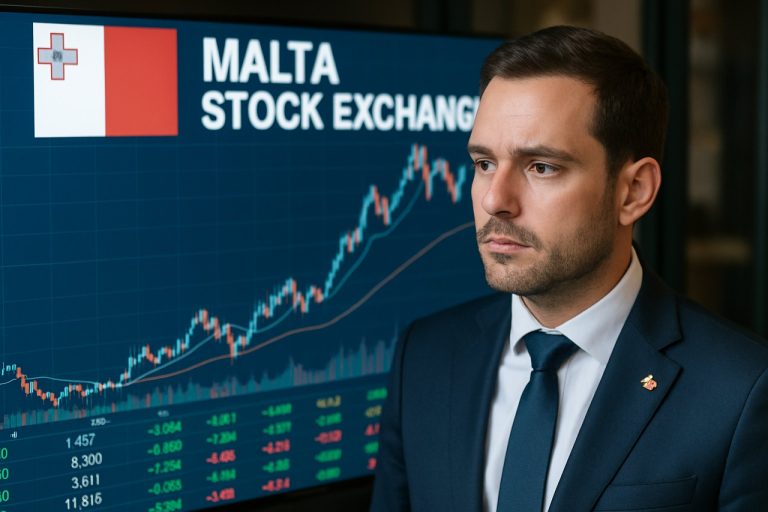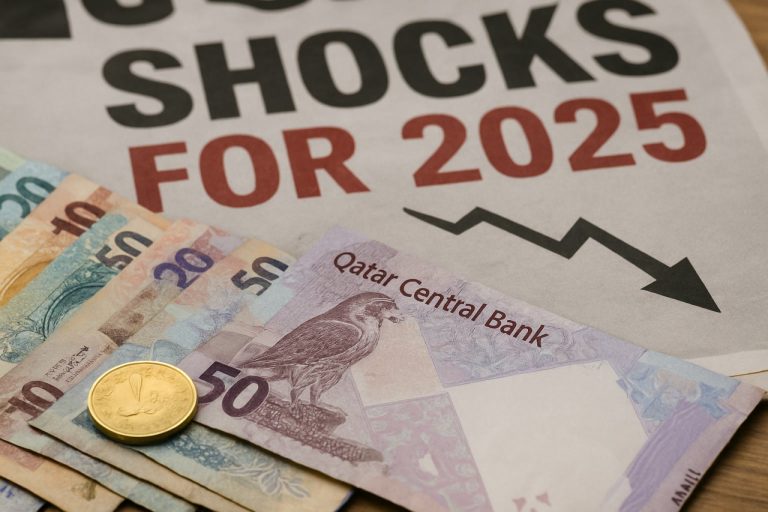
Table of Contents
- Executive Summary: Key Takeaways on Côte D’Ivoire’s Inflation Outlook
- 2025 Economic Context: Drivers and Disruptors of Inflation
- Historical Inflation Patterns: Lessons from the Last Decade
- Current Inflation Statistics: Official Data and Recent Changes
- Government Monetary Policy: BCEAO Actions and Fiscal Strategies
- Impact on Businesses: Supply Chain, Pricing, and Investment
- Consumer Perspective: Cost of Living, Wages, and Purchasing Power
- Legal and Tax Implications: Compliance and Regulatory Updates
- Risks, Challenges, and Mitigation Strategies for Stakeholders
- Future Projections: 2026–2030 Scenarios and Expert Insights
- Sources & References
Executive Summary: Key Takeaways on Côte D'Ivoire's Inflation Outlook
Côte D’Ivoire’s inflation trajectory in 2025 reflects a confluence of global and domestic factors, with recent trends indicating a gradual moderation from the pandemic- and conflict-induced peaks of 2022-2023. After surging to over 5% in 2022, primarily due to elevated global commodity and food prices as well as supply chain disruptions, annual inflation rates began decelerating in 2024. The latest official data show headline inflation stabilizing around 3.5% by early 2025, aligning more closely with the West African Economic and Monetary Union (WAEMU) convergence criterion of 3% Institut National de la Statistique.
- Drivers of recent trends: The moderation in inflation is largely attributed to improved domestic agricultural output, easing global food and energy prices, and targeted government interventions. The government capped fuel prices and subsidized essential food items in late 2023, measures that have helped buffer consumer price increases Gouvernement de Côte d'Ivoire.
- Legal and policy context: Côte D’Ivoire, as part of WAEMU, adheres to regional monetary policy set by the Banque Centrale des États de l’Afrique de l’Ouest (BCEAO), which has maintained a relatively tight policy stance to anchor inflation expectations. The government has also strengthened compliance with the WAEMU convergence criteria and reinforced monitoring of food and transport markets to prevent price gouging.
- Compliance and enforcement: Authorities have increased inspections and enforcement of anti-hoarding and price control regulations. Penalties for non-compliance with government-mandated price caps were raised in 2024 following legislative amendments, enhancing deterrence and protecting consumer purchasing power Gouvernement de Côte d'Ivoire.
- Key statistics: As of Q1 2025, annual inflation hovers at 3.5%, with food inflation slightly higher at 4.1% and non-food items stabilizing below 3%. The BCEAO’s monetary tightening, including an increase in the policy rate to 3.5% in 2024, has contributed to curbing inflationary pressures Banque Centrale des États de l’Afrique de l’Ouest (BCEAO).
- Outlook: Inflation is projected to gradually approach the 3% WAEMU ceiling by late 2025, barring major external shocks. Downside risks include renewed volatility in global commodity markets or disruptions to domestic food supply. The inflation outlook remains sensitive to regional security and climate-related risks, but current policy and compliance measures are expected to support further stabilization.
2025 Economic Context: Drivers and Disruptors of Inflation
In 2025, inflation trends in Côte d’Ivoire are shaped by a complex interplay of both domestic and global factors. The country, a member of the West African Economic and Monetary Union (WAEMU), uses the CFA franc, which is pegged to the euro. This monetary arrangement offers a degree of stability but also exposes Côte d’Ivoire to fluctuations in the eurozone’s economic conditions and European Central Bank monetary policy. In 2024 and early 2025, inflation in Côte d’Ivoire has moderated compared to the post-pandemic peak, reflecting both domestic policy responses and external developments.
According to the Institut National de la Statistique, the annual inflation rate in Côte d’Ivoire was estimated at 3.2% in early 2025, down from a high of 5.7% in 2022. This deceleration is primarily attributed to improved food supply chains following the stabilization of global commodity markets, and targeted government interventions to cap prices on essential goods. However, food prices remain sensitive to weather variability and logistics disruptions, keeping inflation risks elevated in the short term.
Energy costs have also been a significant driver. In response to global oil price volatility, the Ivorian government maintained a partial subsidy regime on fuel prices through 2024 and into 2025. The Ministry of Petroleum, Energy and Renewable Energies has issued periodic adjustments to retail fuel prices, balancing fiscal pressures with social considerations Ministère des Mines, du Pétrole et de l'Énergie. While these measures have helped contain headline inflation, they have also increased fiscal burdens.
From a legal and compliance perspective, the government continues to reinforce the Price Competition Law (Loi relative à la concurrence), empowering the Ministère du Commerce et de l'Industrie to monitor price movements and sanction anti-competitive practices that could exacerbate inflation. Compliance requirements for businesses include regular reporting of price changes and adherence to sector-specific caps on essential goods.
Looking ahead, the inflation outlook for 2025 and the subsequent years remains cautiously optimistic. The Banque Centrale des États de l’Afrique de l’Ouest (BCEAO) projects that inflation will remain within the WAEMU convergence criterion of 3% by late 2025, assuming continued government vigilance and favorable agricultural output. However, downside risks persist, notably from global commodity price shocks, currency volatility, and climate-induced disruptions to domestic food production. Policy flexibility and robust monitoring mechanisms will be critical to sustaining price stability in Côte d’Ivoire through the medium term.
Historical Inflation Patterns: Lessons from the Last Decade
Over the last decade, Côte d’Ivoire’s inflation trajectory has reflected both domestic recovery and external shocks. Following years of civil unrest and political instability, the early 2010s witnessed volatile inflation, with rates often exceeding the West African Economic and Monetary Union (WAEMU) convergence criterion of 3%. However, as stability returned, the government implemented structural reforms and monetary discipline in coordination with the Banque Centrale des États de l’Afrique de l’Ouest (BCEAO), leading to a period of moderate inflation between 2014 and 2019, typically ranging between 0.7% and 1.3%.
The COVID-19 pandemic in 2020 marked a significant turning point, introducing new inflationary pressures. Disruptions in global supply chains, combined with local demand shocks, pushed the annual inflation rate to around 2.4% in 2021, according to BCEAO data. The subsequent years saw further acceleration, primarily driven by rising import prices for food and fuel—key components of Côte d’Ivoire’s consumer price index. In 2022, the inflation rate reached 5.2%, the highest in over a decade, reflecting the spillover from global energy price spikes and the Russia-Ukraine conflict. The government responded with a mix of price controls, subsidies on essential goods, and temporary tax reductions to cushion consumers (Ministère de l'Économie et des Finances).
From a legal and compliance perspective, Côte d’Ivoire adheres to WAEMU’s macroeconomic convergence framework, which mandates fiscal and monetary discipline, including inflation targeting. This regional regulatory architecture, overseen by BCEAO, has guided national policy responses and helped stabilize expectations even amidst global turbulence. The 2023 inflation figure moderated slightly to 4.5%, as documented by the National Institute of Statistics (Institut National de la Statistique), reflecting the effectiveness of these interventions and some easing of international commodity prices.
Looking into 2025 and beyond, projections from BCEAO and the Ministry of Economy and Finance suggest a gradual return toward the WAEMU target, with inflation expected to stabilize around 2–3% by 2026. This outlook is contingent on continued fiscal prudence, the normalization of global food and energy markets, and the government’s commitment to social safety nets and price monitoring. Nevertheless, persistent risks—including climate shocks affecting agriculture, regional security issues, and potential currency fluctuations—mean vigilance will remain essential.
Current Inflation Statistics: Official Data and Recent Changes
As of early 2025, Côte d’Ivoire continues to experience moderate inflationary pressures, driven by both domestic and external factors. According to the most recent data published by the Institut National de la Statistique, the annual inflation rate stood at approximately 3.5% in the last quarter of 2024, reflecting a slight decline from the 4.2% peak observed in mid-2023. This moderation is attributed to improved agricultural output, particularly cocoa and coffee, and a stabilization of global energy prices, which are critical inputs in the Ivorian economy.
The Banque Centrale des États de l'Afrique de l'Ouest (BCEAO) continues to set monetary policy for the eight-member West African Economic and Monetary Union (WAEMU), of which Côte d’Ivoire is a leading economy. The BCEAO maintained its policy rate at 3.25% through early 2025, aiming to keep inflation within the WAEMU convergence criterion of below 3%. However, temporary deviations are tolerated in response to supply-side shocks, such as fluctuating global commodity prices and localized disruptions in food supply due to weather patterns.
On the legislative front, Côte d’Ivoire adheres to the WAEMU’s macroeconomic convergence framework, which obliges member states to implement fiscal and monetary policies targeting low inflation and fiscal discipline. Compliance is monitored through annual reviews by the Commission de l’UEMOA. In 2024, Côte d’Ivoire was commended for its efforts to contain inflationary pressures, though recommendations were made to strengthen price monitoring mechanisms and enhance transparency in fuel pricing.
Recent government interventions include temporary subsidies for basic foodstuffs and fuel, designed to cushion lower-income households from price spikes. The Ministry of Commerce also reinforced price controls on selected staple goods in late 2024, supported by regular market inspections and updated reporting obligations for wholesalers and retailers (Ministère du Commerce, de l’Industrie et de la Promotion des PME).
Looking ahead, official forecasts anticipate inflation will remain within the 2.5–3.5% range through 2025 and into 2026, assuming continued stability in global commodity markets and effective enforcement of fiscal discipline. Persistent risks include weather-related disruptions to agriculture and volatility in international energy prices. The government’s continued focus on compliance with WAEMU targets and proactive market interventions are expected to help anchor inflation expectations.
Government Monetary Policy: BCEAO Actions and Fiscal Strategies
The inflation trends in Côte d’Ivoire have been shaped primarily by the monetary policy actions of the Banque Centrale des États de l’Afrique de l’Ouest (BCEAO) and the fiscal strategies implemented by the Ivorian government. As a member of the West African Economic and Monetary Union (WAEMU), Côte d’Ivoire uses the CFA franc, with monetary policy centrally managed by the BCEAO. In 2024 and heading into 2025, the BCEAO has maintained a cautious stance aimed at curbing inflationary pressures that emerged in the aftermath of the COVID-19 pandemic and the global commodity price shocks.
Recent data from the Banque Centrale des États de l’Afrique de l’Ouest indicate that inflation in Côte d’Ivoire moderated to around 3.5% in late 2024, down from the peaks observed in 2022 and 2023, when inflation reached nearly 6% due to elevated food and energy prices. The BCEAO has responded by gradually raising its key policy rates, including the minimum bid rate and the marginal lending facility, in line with its mandate to maintain price stability within the WAEMU zone. By the end of 2024, these rates were increased by 50 basis points, signaling a tightening cycle expected to persist at least through the first half of 2025.
On the fiscal front, the Ministère de l’Economie et des Finances has committed to a gradual fiscal consolidation strategy. After pandemic-era stimulus measures elevated the budget deficit, the government is now focusing on expenditure rationalization and enhancing domestic revenue mobilization. The 2025 Finance Law emphasizes stricter compliance with WAEMU convergence criteria, which set a ceiling for the budget deficit at 3% of GDP. Key initiatives include digitalizing tax administration and improving customs procedures to bolster state revenues. These measures are designed to support macroeconomic stability and reduce reliance on external borrowing.
- Key statistics: Consumer price inflation is forecast to average between 3.0% and 3.5% in 2025, according to BCEAO projections.
- Compliance: Côte d’Ivoire is aligning its fiscal policy with WAEMU’s regulatory framework and the BCEAO’s inflation targeting mandate.
- Outlook: The inflation outlook is moderately positive, provided global commodity prices remain stable and ongoing structural reforms are implemented. Risks stem from potential supply chain disruptions and external shocks.
In summary, the joint actions of the BCEAO and Ivorian fiscal authorities are producing a gradual deceleration in inflation, with continued vigilance and compliance with regional monetary and fiscal rules expected to underpin stability through 2025 and beyond.
Impact on Businesses: Supply Chain, Pricing, and Investment
Inflation trends in Côte d’Ivoire have significant ramifications for the business environment, particularly in areas such as supply chain management, pricing strategies, and investment planning. As of early 2025, inflationary pressures remain a central concern, driven by a combination of global factors—including persistent disruptions in global logistics—and domestic dynamics such as agricultural price volatility and energy costs.
According to the Institut National de la Statistique de Côte d'Ivoire, the annual inflation rate hovered around 4.2% in late 2024, slightly above the West African Economic and Monetary Union (WAEMU) convergence criterion of 3%. This upward trend has continued into 2025, with food and transport costs being the primary contributors. The government, through the Ministère de l'Économie et des Finances, has introduced temporary measures such as capped prices for essential goods and subsidies for key sectors to curb excessive cost increases, although these interventions have only partially mitigated the impact.
For businesses, supply chains have become more expensive and unpredictable. Import-dependent sectors are especially vulnerable, as the cost of bringing in raw materials and finished goods has risen due to both global shipping disruptions and currency fluctuations against the CFA franc. Some enterprises have responded by diversifying suppliers or increasing local sourcing, in compliance with government encouragement for import substitution and local value addition.
Pricing strategies have had to adapt rapidly. Manufacturers and retailers face the dual challenge of managing higher input costs while remaining competitive in a market where consumer purchasing power is under pressure. The Ministère du Commerce et de l’Industrie has increased monitoring of price-setting practices to prevent opportunistic price hikes and ensure compliance with anti-profiteering regulations. Businesses found to be in violation risk penalties or temporary closure, underscoring the importance of regulatory compliance in the current climate.
Investment decisions are also being reassessed. Elevated inflation tends to raise the cost of capital and create uncertainty about future returns, prompting some firms to delay expansion or new ventures. However, government initiatives—such as tax incentives for local production and support for agro-industrial processing—aim to sustain investment momentum even in a challenging macroeconomic context (Centre de Promotion des Investissements en Côte d'Ivoire).
Looking ahead to 2025 and beyond, the outlook remains cautious. While the government projects inflation to gradually return toward WAEMU targets by late 2026, much depends on stabilization of global commodity prices and the effectiveness of domestic policy responses. Businesses are advised to maintain flexible supply chain strategies, rigorously monitor regulatory compliance, and reassess investment plans in light of evolving inflation dynamics.
Consumer Perspective: Cost of Living, Wages, and Purchasing Power
In 2025, consumers in Côte d’Ivoire continue to feel the effects of inflation on everyday expenses, wages, and overall purchasing power. The country, part of the West African Economic and Monetary Union (UEMOA), uses the CFA franc, with its monetary policy influenced by the Banque Centrale des États de l'Afrique de l'Ouest (BCEAO). After a period of moderate inflation in the early 2020s, the nation saw a notable uptick in consumer prices beginning in 2022, primarily driven by global energy cost fluctuations, logistics disruptions, and the lingering impacts of the COVID-19 pandemic.
According to the Institut National de la Statistique, annual inflation stood at approximately 4.5% at the close of 2024, remaining above the UEMOA convergence criterion of 3%. In 2025, the inflation rate is projected to moderate slightly but remain elevated, with estimates hovering between 3.5% and 4%. Key contributors include food prices—which account for a significant share of household expenditure—transportation costs, and imported goods affected by currency fluctuations and global supply chain volatility.
From a legal and regulatory perspective, the government has taken steps to address inflation’s impact on consumers. Price controls on essential goods such as rice, cooking oil, and fuel remain in place under the authority of the Ministère du Commerce et de l’Industrie. Additionally, compliance with consumer protection laws is being monitored more rigorously, with regular inspections and penalties for violations related to price gouging or misinformation.
Despite these interventions, real wages have not kept pace with rising prices. The statutory minimum wage (SMIG) was last adjusted in 2022, and although discussions are ongoing about further increases to offset inflation, no formal changes had been enacted as of early 2025. This lag contributes to a contraction in household purchasing power, particularly among lower-income groups and those in the informal sector, which represents a substantial portion of Côte d’Ivoire’s workforce.
Looking ahead, the inflation outlook hinges on both domestic and external factors. The BCEAO’s monetary policy stance—currently focused on price stability—may tighten further if inflation persists, potentially affecting credit conditions and consumer access to financing. Meanwhile, any policy changes regarding subsidies or fiscal measures will also shape the cost of living trajectory. The government’s ongoing commitment to monitoring market compliance and supporting vulnerable populations will be crucial in managing consumer welfare as inflation trends evolve over the next few years.
Legal and Tax Implications: Compliance and Regulatory Updates
Côte d’Ivoire has experienced notable inflationary pressures in recent years, with significant legal, tax, and regulatory implications for both businesses and individuals. As of early 2025, inflation trends remain a central concern for policymakers, shaped by both domestic factors and global economic shifts. The annual inflation rate, which peaked at around 5.2% in 2022, has shown moderate easing but remains above the target set by the West African Economic and Monetary Union (UEMOA), which is 3% for its member states, including Côte d’Ivoire (Banque Centrale des États de l'Afrique de l'Ouest).
To mitigate inflationary effects, the government has implemented several fiscal and regulatory measures. The Ministry of Economy and Finance continues to monitor price evolution of staple goods and has intervened by temporarily suspending or reducing import duties on essential commodities, such as rice and wheat, to stabilize local markets (Ministère de l’Économie et des Finances). Furthermore, the government has enforced price controls on certain consumer goods, with the Ministry of Commerce issuing regular directives to ensure compliance and prevent price gouging.
Tax compliance remains a priority as inflation affects both revenue collection and business operations. The Direction Générale des Impôts (DGI) has introduced digital platforms to streamline VAT and corporate tax filings, aiming to improve compliance rates despite inflation-induced liquidity challenges for enterprises (Direction Générale des Impôts). Businesses are urged to adjust transfer pricing policies and update accounting for inventory valuation to reflect inflationary impacts, in accordance with Ivorian tax codes and recent regulatory guidance.
Legislative updates have also addressed inflation’s social impact. For example, the government has increased the minimum wage and adjusted public sector salaries, as mandated by recent decrees, to support household purchasing power (Gouvernement de Côte d'Ivoire). Regulatory attention is also focused on anti-competitive practices, with the Autorité Nationale de Régulation du Secteur du Commerce surveilling compliance with anti-inflationary measures and sanctioning violators.
Looking ahead to 2025 and beyond, the outlook hinges on global commodity prices, regional monetary policy, and local reforms. The Central Bank’s commitment to prudent monetary policy and ongoing government interventions are expected to gradually reduce inflation towards the UEMOA target, provided external shocks remain contained. However, businesses should remain vigilant to evolving compliance obligations and tax adjustments as regulatory authorities respond dynamically to inflation trends.
Risks, Challenges, and Mitigation Strategies for Stakeholders
Côte d’Ivoire has experienced significant inflationary pressures in recent years, largely influenced by global commodity price fluctuations, supply chain disruptions, and domestic economic reforms. According to the Institut National de la Statistique, the national inflation rate reached 4.5% in 2023, driven primarily by rising food and transportation costs. While this is above the West African Economic and Monetary Union (WAEMU) convergence criterion of 3%, it remains below the sub-Saharan African regional average.
For 2025, the outlook remains challenging. The Banque Centrale des États de l'Afrique de l'Ouest (BCEAO) projects inflation to moderate to around 3.8%, contingent upon stable global commodity prices and internal policy effectiveness. However, risks persist due to potential external shocks (such as oil and grain price volatility), currency fluctuations, and continued supply bottlenecks. Moreover, any domestic policy adjustment, such as fuel subsidy reforms or tax increases, could exert upward pressure on prices.
- Regulatory and Policy Context: The government has enacted several fiscal and monetary measures to contain inflation, including the implementation of targeted subsidies and price controls on essential goods. The BCEAO continues to maintain a cautious monetary stance, balancing the need for economic growth with inflation containment (Ministère de l'Economie et des Finances).
- Compliance and Monitoring: Authorities have enhanced market surveillance and compliance checks to prevent price gouging and ensure the fair distribution of subsidized goods. Regulatory agencies are also working to improve the efficiency and transparency of the supply chain for critical imports.
- Key Stakeholder Risks: Businesses face increased input costs and uncertainty in price-setting, which can compress margins and complicate contract negotiations. For households, persistent inflation threatens purchasing power, particularly for vulnerable groups reliant on staple food imports.
- Mitigation Strategies: Stakeholders are encouraged to adopt hedging strategies, diversify supply sources, and enhance inventory management to buffer against price volatility. Engagement with government support programs and close adherence to compliance regulations are also critical to mitigating operational risks.
- Outlook: While inflation is expected to gradually ease towards the BCEAO’s target by 2026, vigilance is necessary. Continued policy coordination, improved supply chain resilience, and robust regulatory enforcement will be essential in navigating the inflationary landscape in Côte d’Ivoire over the next few years.
Future Projections: 2026–2030 Scenarios and Expert Insights
Looking ahead to 2026–2030, inflation trends in Côte d’Ivoire are projected to be shaped by domestic policy responses, regional economic integration, and global market dynamics. Following a period of relative macroeconomic stability, the government has prioritized controlling inflation to maintain purchasing power and foster sustainable growth. The Central Bank of West African States (BCEAO), which manages monetary policy for Côte d’Ivoire and other WAEMU members, continues to target low and stable inflation, generally aiming for a ceiling of 3% per annum in line with convergence criteria for the West African Economic and Monetary Union (BCEAO).
Recent legislation and regulatory reforms are expected to play a significant role in inflation containment. Fiscal consolidation measures, including efforts to broaden the tax base, improve public financial management, and enhance transparency in government spending, were enacted in 2024 and are set for full implementation over the next few years. Compliance with these reforms will be monitored by both national authorities and WAEMU institutions to ensure adherence to fiscal discipline and macroeconomic convergence criteria (Ministère des Finances et du Budget de la République de Côte d'Ivoire).
Key statistics from 2024 indicate that inflation, which spiked above the BCEAO target in the aftermath of global supply chain disruptions and higher import prices, has since moderated. The annual inflation rate was estimated at 3.3% in 2024, just above the regional threshold, with food and energy prices as primary drivers. However, structural reforms in agricultural supply chains, ongoing improvements in transport infrastructure, and a stable regional currency are expected to ease inflationary pressures from 2025 onward (BCEAO).
- Scenario 1: Baseline – If current policies are maintained, inflation is projected to remain near the BCEAO target, fluctuating between 2.5% and 3% annually through 2030, supported by prudent fiscal management and moderate global commodity prices.
- Scenario 2: Downside – Renewed external shocks (e.g., volatile energy costs or global supply chain disruptions) could temporarily push inflation above 4%, especially if domestic food supplies are affected by climate events.
- Scenario 3: Upside – Successful implementation of new infrastructure and agricultural productivity programs could bring inflation below 2.5% by late 2020s, enhancing price stability and real incomes.
Expert consensus suggests that while short-term volatility is possible, Côte d’Ivoire’s inflation trajectory for 2026–2030 is likely to be contained within the BCEAO’s target range, assuming continued policy discipline and regional economic cooperation (BCEAO).



